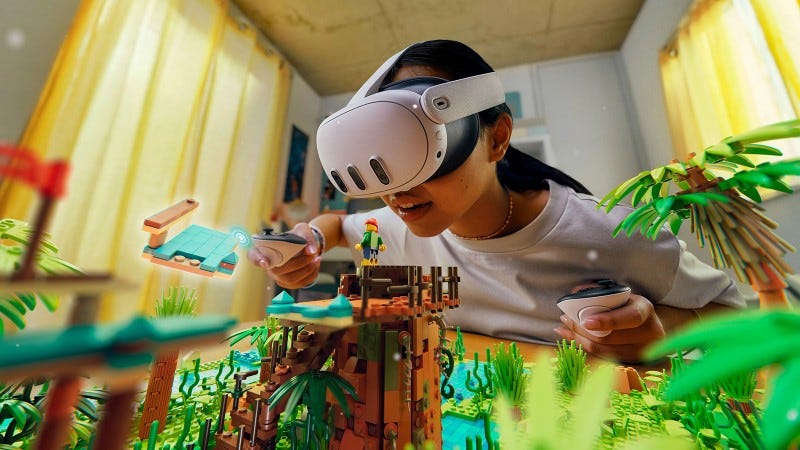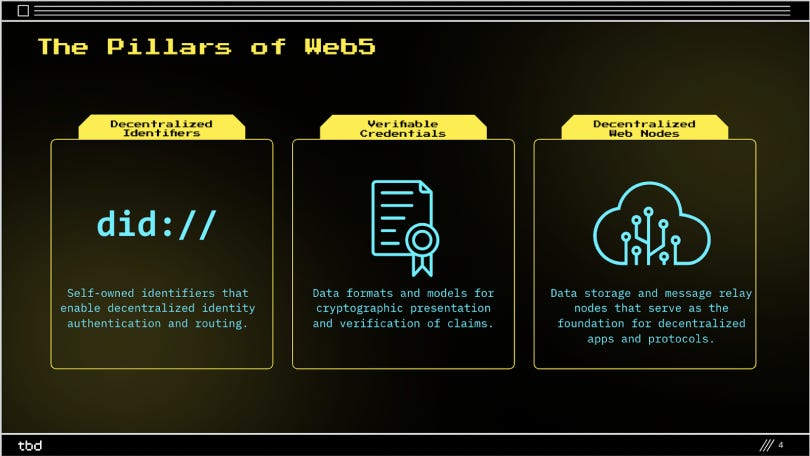Top Tech Trends to Keep Track of in 2024
Future-proof yourself with a foresight into the latest tech innovations in 2024
2023 was an exciting year for the tech industry. From lay-offs at the beginning of the year by top tech giants to the unprecedented growth of AI throughout last year to the comeback revival of crypto towards the tail end of the year; we can all admit that 2023 was a real tech roller coaster ride.
As we enter the new year, contemplating the tech industry's future becomes inevitable. Anticipating key trends in tech for 2024 is essential for effective future-proofing. So with no further ado, here are the top tech trends to keep track of in 2024:
Artificial Intelligence 🧠
There is no denying it, 2023 was a groundbreaking year for artificial intelligence (AI). Since ChatGPT's debut in late 2022, the AI landscape has witnessed a surge in innovations. Notable highlights include advancements in image generation models, such as Midjourney and DALL·E-3 by OpenAI, capable of crafting photo-realistic AI images. OpenAI unveiled GPT-4, an enhanced natural language model, while Google introduced Bard and DeepMind's Gemini. AI integrations also flourished, enhancing user experiences in products like Notion, Adobe, and Canva.

So what are our predictions for AI in 2024?
As AI integration grows across industries, there will be increased job opportunities for people with AI skills. The demand for prompt engineering, involving instructing Large Language Models without programming knowledge, spiked last year. This skill is crucial for tasks like AI image generation and automation. Machine learning and data engineers are sought after as companies aim to customize AI models for their specific needs. Companies like Anthropic, Cohere, and xAI by X (formerly Twitter) are developing their AI models, while collaborative efforts can be seen on platforms like Huggingface. The rise of AI-powered devices and operating systems opens doors for systems and embedded systems engineers with products like the AI pin by Humane and Rabbit R1 by Teenage Engineering.
AI plugins and add-ons are on the rise, offering custom models trained on existing AI models for specific tasks. Notable examples include the Builder.io Figma plugin, which generates code for web designs, and Github Copilot, an extension that enhances developer productivity by auto-generating code. OpenAI has introduced the ability to build specialized custom GPTs on ChatGPT and launched a GPT marketplace, expanding opportunities in the AI landscape.
Mixed Reality (AR/VR) 👓
The Augmented Reality (AR) and Virtual Reality (VR) space have been on a relatively tranquil but steady growth in recent years. However, when Apple unveiled the Apple Vision Pro last year, an immersive experience device that elevates computing from a 2-dimensional surface to a captivating 3-dimensional realm.
The Mixed Reality landscape is undergoing remarkable innovation, with Oculus VR, Meta's Quest 3, and Pico 4 VR headsets leading the charge. These advancements are paving the way for more immersive experience applications integrated into our daily lives.
This surge in MR applications is fueling a growing demand for skilled professionals who can craft compelling VR/AR experiences. Roles such as Mixed Reality Engineers, 3D game developers, and AR/VR designers are becoming increasingly vital as companies strive to develop captivating applications for the expanding market of MR products.

In this dynamic environment, robust tools play a crucial role. 3D game engines like Unreal Engine, Unity and the open-source Gadot engine continue to empower developers, while designers rely on tools like Blender and Spline for crafting intricate 3D assets. Concurrently, integrating spatial view in web applications is gaining traction, allowing MR devices to seamlessly interact with objects in the expansive realm of 3D space, ushering in a new era of enriched user experiences.
Web3 makes a comeback 🌐
In recent years, Web3 has sparked controversy amid crypto dramas, such as the FTX scandal causing the late 2022 crypto crash and the NFT failure to go mainstream. However, crypto is making a comeback. The turmoil in the Web3 space has paved the way for more value-focused projects. A vital technology enabling decentralization is blockchain, a secure, decentralized digital ledger ensuring tamper-resistant transactions. Examples of blockchains include Bitcoin, Ethereum, Solana, and Polygon.
In 2024, the focus on Decentralized Finance (DeFi) will grow, enabling direct peer-to-peer money transfers and introducing various DeFi products with smart contracts for tasks like loans and payments. This trend creates opportunities for smart contract engineers, and the demand for user-friendly Web3 interfaces will rise, exemplified by wallets like Family, Rainbow, and Metamask. There will also be advances in blockchain interoperability. Blockchain protocol engineers can use Polkadot's Substrate framework to build bridges between blockchains. Progress is expected in achieving privacy-focused transactions with zero-knowledge proofs, and collaboration will increase through Decentralized Autonomous Organizations (DAOs) as people unite to work on shared ideas.
Web3 also includes innovations outside the blockchain. There have been advances in decentralized storage and communication recently. A project that comes to mind in this is Bluesky which uses the AT Protocol for social networking. Also, there has been the advent of Web5 gives users total control of their data without blockchain using decentralized identity (DID) and decentralized web nodes (DWNs).

Native web 🏡
In 2024, the landscape of web development is marked by the evolution of the native web concept, where Progressive Web Apps (PWAs) continue to play a pivotal role in crafting seamless, app-like experiences. Developers are increasingly focused on creating engaging, performant, and reliable PWAs, harnessing modern web technologies to offer offline functionality, quick loading times, and features like push notifications. Concurrently, the rise of Web GPU technology is enhancing web graphics and computational capabilities, enabling the creation of more visually immersive experiences, especially in applications like gaming, virtual reality, and augmented reality.
Native browser elements, exemplified by HTML's <dialog> element, are gaining traction, simplifying the creation of modal dialogs that are more accessible and user-friendly interfaces. These native features empower developers to build interfaces without heavy reliance on external libraries. Additionally, there's a growing expectation that platforms, including IOS, will further ease restrictions on PWAs.
Conclusion
As we dive into the tech trends of 2024, it's crucial to future-proof your career by staying updated. Embrace upskilling and join communities like ours at https://bit.ly/join-dome for networking and shared knowledge. In this fast-paced digital era, continuous learning is key to staying relevant. Don't miss the chance to fortify your skills and ensure a future-proof career.






